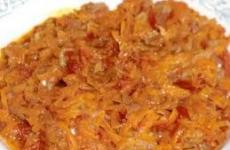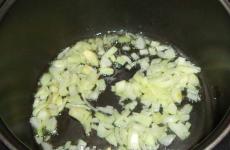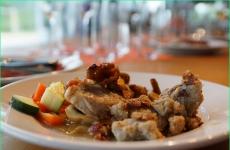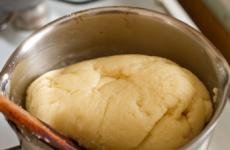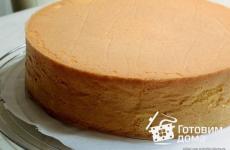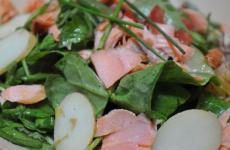Woods for manual tubes on wood: features and general classification. Types of Pellets for Bosch Electrvolovikov (Bosch), features of their marking and purpose which saws are for an electric bike
Properly selected components, make work with any tool more comfortable and pleasant. Perhaps the most significant working element of the electrolybiz is a saw blade. This consumator can turn the process of cutting into a flat and neat song, or vice versa, to reduce the works to the curve and the unfortunate Nausessic. To save yourself from possible unpleasant situations and choose the optimal canvas for its purposes, it is useful to know their views and features. Pilking for the electrolovka, at first glance, may seem too diverse, but reading this article, you will understand that their classification is simple and very convenient.
Decoding marking
To date, there are several standards of saws, each of which is fixed in a certain brand. Bosh's peils are most popular in Europe. In second place is Makita. The third divide Festool, Hitachi and the rest. Since the labeling of the pilot for the Electrolovka Bosch is the most common, we will analyze it in more detail.


As you might notice in the image above, digitally letter notation The saw blades have their own place and meaning. For whiter than clear disclosure of the general picture, we will tell about each symbol in two words.
Type of shank may have several different variationsIt is necessary to take into account the owners of jigsaws with a quick fastening. If in your instrument boopred or screw clampYou can install a canvas with any shank.


Size of teeth affects the quality and speed of cutting. If you work with decorative or facing materials, it is better to choose a pink with the smallest teeth (a). So work will be much careful, although noticeably slower. For fast and coarse sawing boards, chipboard and similar materials, it is recommended to use a cloth with a larger tooth (B, C, D). Determine, sacrifice speed or quality, follows from the tasks.

- F - bimetallic. A fairly flexible canvas with very durable teeth, which is a symbiosis of two metals. Used for direct and curly cutting metal and has increased wear resistance.
- O - with a narrow back. Relatively thin pilot for the electric bias used for curly cutting.
- P - for accurate cut. Thick canvas, resistant to bending during operation. Great for accurate, smooth saws at a certain angle.
- X - Teeth with a progressive step. Multipurpose pinks suitable for cutting wood, plastic and metal. For your versatility they pay the quality of the cut, which leaves much to be desired.
- R - Reversible (reverse) teeth. In contrast to the standard direction, up, the teeth of reversing canvases are directed down. When working the jigsaw with a similar piloc, the chips are formed from the opposite side.

In addition to standard European labeling, which not all manufacturers adhere to, there is a single designation that can be found in the description of any saw blade.
Saw blade material
In the dependence of the material being processed, the filling can be made of the following steel grades:
- CV - chromovanadium steel. It is used in the production of pylons on the tree and its derivative (plywood, fiberboard, chipboard and others).
- HCS - alloying (carbon) steel. Suitable for sawing wood and plastic.
- HSS - high-speed steel. It is used for cutting metals.
- Bm (BI-Metal) - Bimetallic web is a mixture of two steel stamps (HCS and HSS), where the backrest has an HCS alloy, and the teeth - HSS. Bimetallic canvas are very durable and maneuverable, and can be used for direct and curly cutting wood and metal.
- HIM - alloy based on tungsten carbide. Pilking made of steel of this brand are used to work with ceramics, foam blocks and similar materials.
For what material
- Wood - pinks on punk, chipboard, fiberboard and soft wood rocks.
- Hardwood - canvas for cutting dense wood and laminate species.
- Metal - to work with ferrous metals.
- ALU - for cutting aluminum.
- INOX - in stainless steel.
- Fiber & Plaster - for cutting polymeric products.
- Soft-Material is a universal canvas for working with metals, plastic and wood.
- Basic - Pink with medium quality cut. Optimal option For everyday use in everyday life.
- Clean - canvas for performing pure cut.
- Speed \u200b\u200b- for coarse, but quickly cutting.
- Flexible is a flexible saw blade for working with metal.
Types of Pellets for Lobzik
A variety of sawing cloths, today, goes beyond the understanding of the usual user. Saws for the jigsaw are divided into dimensions, teeth steps, types of cutting edges and other parameters, completely alien and uninteresting for most buyers. At the same time, everyone wants to work optimally tuned tool and receive the result of due quality. To briefly and clearly explain to you how to choose a pet sheet for a jigsaw, we have distributed them to the most popular materials.Lobsika Wood Lobby
 Cutting wood and its derivatives to be made by steel blades, CV, HCS and BM brands. The size of the teeth depends on the type of material being processed and the quality requirements of the line cut:
Cutting wood and its derivatives to be made by steel blades, CV, HCS and BM brands. The size of the teeth depends on the type of material being processed and the quality requirements of the line cut: A and B - canvas with the smallest teeth. Used for pure cutting laminate.
C is the medium teeth with the corresponding quality of cutting. Popular works with chipboard, fiberboard, plywood and wood.
D - Maximum tooth length. Used for fast but rough cutting chipboard and tree.
For straight cut decorative materials (Plates with a coating or laminate), suitable T101BR (with reversible medium-sized teeth).
A timber or thick wood is better to cut the T344C web (long with large teeth). The size of the peel should be chosen based on the thickness of the sawn material.
The main qualities of which should have a pink for the chipboard for the jigsaw, is a small length (up to 75 cm), the teeth of the class A or B with a middle step in 2-3 mm.
Figure cut is better to produce a dense type T101BO (with medium-sized teeth and thin back).
Lobsika metal canvas
Coluned metal with electric jigsaw, occurs using pylons from the following steel grades: HSS and BM. For such cutting elements, a small tooth with wave-like dilution is characterized (as on the hacksaw for metal). Bimetallic species Pellets for the electrolovka (BM) have larger teeth that decrease to the base.
For cutting sheet metal, 1-3 mm thick, the T118A carriage is suitable, up to 75 cm long, with a small tooth.
Thirdly metal, up to 6 mm, it is better to cut the T118B instance, the same length (up to 75 cm), but with larger teeth.
Pipes or metal profile, thickness of 1-3 mm, it is convenient to cut the T318A fabrics (90-150 mm, with a fine tooth).
To work with very thin sheets (from 0.5 to 1.5), a filling for a jigsaw metal, T118G brand (up to 75 cm, with microscopic tooth) is suitable.
Pilking for plastic
 Lobzik with PVC products are used, the canvas from the following steel grades are used: CV, HCS, HSS and BM. There are also special plastic piles (Fiber & Plaster), and ordinary, wood or metal. When working with this material, it is better to give preference to large teeth (B, C, D). If there is only pinks with small teeth at the disposal, it is recommended to set the minimum speed on the tool, since heated plastic sawdust can seriously score the cutting part.
Lobzik with PVC products are used, the canvas from the following steel grades are used: CV, HCS, HSS and BM. There are also special plastic piles (Fiber & Plaster), and ordinary, wood or metal. When working with this material, it is better to give preference to large teeth (B, C, D). If there is only pinks with small teeth at the disposal, it is recommended to set the minimum speed on the tool, since heated plastic sawdust can seriously score the cutting part. Fat plastic is better to cut with a bimetallic web T101BF (up to 75 cm, a tooth of medium sizes). The speed should be below average.
Plexiglas and plastics sheets can be quite confidently cutting the T101A filling with a small tooth.
Lobzik cloth for ceramics
The fragile structure of ceramics is significantly different from flexible metal and fibrous wood. For cutting such material, special canvases are required, differing from the usual lack of teeth, in the place of which deposit carbide-tungsten or diamond. The filling for the jigsaw on the cafela, is made of carbide material, with the designation "HM".
In most cases, the copies presented in stores consist of a tungsten carbide alloy and can cope except with wall tiles. There are more durable, diamond peckings for a jigsaw on a stone that can cut the floor tile.
When operating an electric bike with ceramics, it is worth understanding that this tool is not intended for such a material. This device is better to use for curly saws, and for straight line - plates or a grinder.
For cardboard
The blades for the jigsaw in the cardboard, rubber, foam and other soft materials, has a wave-like cutting part, without any teeth. When working, the pink does not crumble and does not tear the material, but smoothly and gently separates it into flat parts.
Great for cutting carpet And it is much cheaper than professional scissors.
Best Pilking for Electrolovka
A variety of all sorts of brands allows us to make the optimal budget, selection of saw blades. Among the products offered, you can meet consumables of different quality. If you argue on the topic, which plane for the electrolybiz is better, several manufacturers can be distinguished: Bosh, Makita and Matabo.The most common, with quality superior price is the original BOSH brand canvases, any classification. Pilking for the jigsaw of this brand, have the perfect performance and are very convenient to work. Unfortunately, among the proposals, fakes are often found. low qualitywho create a false impression of this company. Fortunately, there are several proven ways, how to distinguish a fake pink for the jigsaw from the original.

- Counterfeit is made with a stamping of a large metal sheet, as a result of which one of the sides of the saw blade has a slightly rounded face. Original Pinks "Bosch", sharpened perfectly smoothly from all sides.
- Poor-quality metal with corrosion and defects, indicates a defective product.
- The inscriptions and emblems on the leg must be clear, without blurring contours. If the seal on the beer glanced and blurred, then in front of you fake.
Save this page in your social. Networks and come back to it at a convenient time.
All photos from the article
Saws for a wood jigsaw have many varieties. They differ in width, length, tooth, material and even tail. In this article we will analyze the subtleties of the right choice, on which the quality of the cut and the speed of your work depends.
General provisions

Pillet for manual jigsaw on wood is cutting toolWhich in the process of work is performed forward moving up and down, making straight or curly cuts.
Tip: When buying an electric jigsaw, check for the presence of a pendulum function.
Thanks to it, an additional movement of the canvas is performed and backward, which speeds up the process and reduces the engine load.
The use of such equipment largely simplifies the processing of wooden and not only products with their own hands. In addition, it makes it easy to create curly slices necessary when collecting some structures or for the purpose of their decoration.
Varieties
The first thing that you need to pay attention to when choosing a suitable file for the jigsaw wood, is it on its marking that determines the material from which it is made:
Frame material

| Marking | Description |
| HCS. | The presence of such letters on the tail part of the web means that it is created from carbon steel and is intended exclusively for work with wood, as well as with similar wood-shaped and fibreboard. Be careful, even the presence of small teeth should not be misleading, only wood materials. It should also be borne in mind that the cutting part may have a ruin that speeds up the process, but worsens the quality of the cut. |
| HSS. | In this case, in the manufacture of the peel, high-speed-resistant tool steel is used, which is ideal for cutting soft and solid metals, such as steel, aluminum and cast iron, but not a tree, and has a tangible fragility. |
| BIM. | Under such designation there are cloths that are equally suitable for both metal and wood. |
| HM / TC. | A solid alloy is used here, which perfectly copes with solid and abrasive materials, which include tile, aerated concrete, ceramic tile. The price of such cloths is quite high. |

It turns out that if you need a logs in a tree, you should buy products with HCS marking, if the work spectrum can alternate with the metal, then the purchase of the BIM cloth set will become more rational. HSS is definitely not suitable for wood because of the small stroke of the teeth, and the HM / TC is too expensive to spend them on the sawing of wooden samples.
Frame size
- The saws for the wood electric bissing, as a rule, are 7.5-15 cm long, which allows you to cut enough wide boards.
It is indicated as follows:
- "1" is the shortest embodiment of 75 mm.
- "2" - the average pink of 90 mm long.
- "3" - an elongated canvas, reaching 150 mm.
- "4" - a super long saw exceeds 150 mm.

- Patterns for drinking by a jigsaw on a tree are performed only by a thin web, but sawing wood-chip and fibreboard - thick.

Tubes profile

Video in this article will introduce you to additional materials. Have a good choice!
Electric jigsaw is a regular device practical application Each Watches Wizard, and the development and improvement of the technique expanded its sphere practical use. Now the device can be successfully used when working with other materials, the only thing that should be taken into account is right choice Saw blades. Pilking for the electrolovka are classified across several significant signsThat allows you to initially select the desired nozzle depending on the features and type of cutting. Let's try to figure out how to choose the right pink for your jigsaw, and what kind of types there are.
Requirements for the instrument are currently very high. Productivity, and the speed of work, and the accuracy of feeding, and its evenness is important. IN general All options for cloth classifications suitable for the electrolovka can be combined into several groups on the following features:
- type of shank;
- the material used in the processing process;
- options for shape of the teeth of the pink;
- width of the canvas;
- teeth pitch;
- the thickness of the canvas.
Views of Pelok
By type of shank
T-shaped version. This shank is called "Bosch", since it is Bosch that owns the idea of \u200b\u200bits creation. Focusing on the leader in this area, other manufacturers began to produce jigsaws with the same shanks, so they are currently common.
U.-Addle shank. The next use frequency is an American version that is suitable for old types of logs. Also compatible with models having screw and boilers.

ShanksMakita. andBosch.. Rarey representatives of their species, suitable only to the jigsaw of the same manufacturer, and the old sample.
By material
Perhaps this is the main classification sign, most accurately dividing all the options for the pilot for the electrolovka and allows you to describe in detail their views and features of operation.
Metal. Such saw blades are most often made of special high-speed steel, the segments of cutting are small and depend on the degree of hardness of the metal - the smaller, the smallest to the tooth. In general, it is truth to say, the jigsik is not very suitable for the metal - the process of cutting usually becomes long. The selected version of the filling can be approached either for aluminum or for steel, or for non-ferrous metals.

On wood. It is a tree from the moment of creation of an electrolybiz, it was the only variant of the material in its application, and so far it is it is its classic purpose. Such pinks are made of chromovanadium or high carbon-type steel. At the same time, for the draft saw, where there is not so much accuracy and accuracy, how much speed, use wide web and large teeth.
For clean processing Panels from chipboard and fiberboard are needed rather accuracy than increased performance, so the pedal for these purposes has a teeth up to 3 mm and a small divorce.
There are also special options with double tentallowing you to make sure to make laminated panels. For figure-processing, non-trap options are used with small teeth and slightly bevelled back.
For laminate. The peculiarity of such a canvase is the presence of so-called inverse teeth that prevent the occurrence of chips on the front part when sawing. Tooth has a small peel.

For ceramic tile. Such models are equipped with a carbide coating around the edges. Such a nozzle is convenient to cut and even cut fig. However, it should be noted that only wall tiles can be cut with an electric bike, for outdoor it is necessary for a Bulgarian or tile.

Universal. Equally well coped with wood, and with metal due to the fact that on one side of the saws the teeth are small, and on the other are large. For curly treatments and absolutely impeccable cutting such a blade will not fit.

Special. Divided into groups of products intended for different materials. For ceramic tiles, as already described earlier, options from the most durable alloys with a special spraying are suitable. Choosing a logging for such purposes, note that the expediency of its use is present only in the cases of the necessary figure cutting, for direct edges there are other, more adapted options.
If the material contains abrasive particles, as in the case of plaster or cement, the pills are stupid very quickly. Special canvases should be selected, on the cutting part of which the attacks of a solid alloy are located.
For soft "forms" type of cardboard or rubber, choose "Toothless" saws, Rather, resemble knives. The edges are performed by a wave with grinding.
In the form of teeth
With divorced milling. In such options, the peel teeth will be filmed into different sides In turn. In this case, the width of the width is equal to the 1.5th thickness of the canvas itself. Thanks to the wiring, there is no strong heating, and sawdust is removed simply and easily. Used with quick cuts not too solid wood as well plastic structures and non-ferrous metals.

With wave-like milled. The wiring is performed by teeth groups, which deviate alternately to the left and right. The magnitude of the deviation of each subsequent differs from the angle of inclination by the previous one, thus the wave is formed. Such saws are used with clean cutting of plastic and aluminum products and non-ferrous metals materials.

With polished teeth, grinding conical. It is used exclusively for chisty saws when processing wood and plastics, as well as laminate and polymeric materials.

With divorced polished. Used for accelerated cutting with coarse fresh softwood, plate chipboard and fiberboard.
By width of the web
This pink parameter is selected taking into account the specifics of the requirements for specific results of work. Wide cloths are more stable, so nothing prevents to cut at high speed without fear of deviations. If you need to cut a curve qualitatively, then more narrow optionsWith their help you can easily overcome turns. It is necessary that the teeth themselves are located directly on the drive axis - this gives the controllability tool.

By step of Zubtsov
A step is called the length of the trajectory between the vertices. In most countries, such a step designation is taken as TPI from the English "Teeth Per Inch", measured by the number of teeth, which is 1 inch. That is, if, for example, the TPI value is 5, then this means that in one inches of the canvas present 5 teeth.
If the wood must be cut into transversely, then it is advisable to use the pinks with TPI equal to 7-4, with ordinary works It is enough 9-7, if necessary, extremely accurate and neat cut - 13-10. It is also necessary to take into account the thickness of the source materialThe work should involve 6-8 teeth, otherwise the canvas will begin to vibrate, and it turns out to be torn.

Through the thickness of the web
The thickness of the peel determines how much it will deviate from the vertical installation. From this point of view, thick saw blades are most well provided with a smooth perpendicular sleeper. However, they almost certainly do not suit the jigsaws, which have a quick-sample version of the mechanism.
The labeling of the pilot for the electrolybiz is particularly useful for those who are not yet experienced in carpentry business and cannot designate the appointment of the nozzle, focusing on its appearance.
Most manufacturers tend to label their products in the system invented by Bosch.
So marking is affixed on the tail and contains a combination of letters and numbers.

The first literature in combination indicates the type of shank:
- T-shaped
- U-shaped
- M - for Lobzikov Makita,
- fEIN standard.
- 1 - the shortest length, does not exceed 75 mm,
- 2 - average 75-90,
- 3 - Long 90-150,
- 7 - the longest pecks with a length of over 150 mm.
The next letter indicates the size of the teeth:
- A - small teeth,
- In - average
- C or D is large.
The last letter indicates some additional important information:
- F is a working part of a particularly durable bimetallic alloy,
- P - accurate cut
- O - a narrow back
- X - progressive teeth pitch,
- R is a reversible (reverse) direction of teeth.
The color of the shank can also say much. Gray denotes the descent of the sawdust for wood materials, blue - for metal, and red - for plastic structures.

The type of steel, based on the canvas in production, is affixed by a special combination of letters on the neck:
- HM - solid alloys,
- CV - chromenadium steel,
- HSS - high-speed steel,
- HCS (CV) - high carbon steel,
- BM (BIM) - CV and HSS connection, very durable and durable.
Often on the beer are affixed letter notationdirectly reflecting the essence of its destination. For those who are at least a little familiar with english language, decipher these letter combinations will not be much labor.
- Wood points to work with a soft tree and other soft materials.
- "Hardwood" - solid wood, PVC panels.
- "INOX" - works with stainless steel.
- "Metall" - metal.
- "ALU" - aluminum.
- Fiber, Plaster - fiberglass.
- Soft-material - rubber, carpet.
- Acrylic - polycarbonate.
Conclusion
Now you are familiar with the main types of cloths, and easily be able to answer the question of how to choose the right pink for your electric bike. Considering the specifics of the device of each product, you can choose a truly suitable option Pilking, which will serve for a long time and will not spoil your initial idea. For those who practice joinery often, it makes sense to acquire a variety of options Pellets and use them strictly for its intended purpose. If you take the jigsaw a couple of times a year, it is better to have at hand universal models for urgent and rough work, and neat and curly cut Trust professionals. Good shopping for you!
»We choose the saws (saw blades) for the electrolovka
We choose the saws (saw blades) for the electrolovka
With the help of the broadcast, you can cut almost any materials: wood, metal, plastic, ceramics. Performance and accuracy of cutting strongly dependent on type pilk (saw blades), which must correspond to the resulting material. When buying pylons for the jigsaw, you can focus on the label, which reflects the appointment of the peel.
Types of Pellets for Lobzik
Among the pinks of different types differ in the form, dimensions, features of dilution and sharpening of teeth, as well as material, width and thickness of the canvas. The length of the pylon, as a rule, is 75, 85, 100 and more mm. When choosing a pylon, take into account the thickness of the material that is supposed to cut. All simple - the length of the peel should be at least more material thickness plus the amplitude of the stroke.
Lobzik's Tooth Pilking
The purpose of the filling can be determined by the turn of the teeth. For example, for cutting of a tree, a peel is designed with a teeth increment ranging from 2.5 to 4 mm. Bole is a frequent step of teeth (1-2 mm) characteristic of a saw for metal. Pilking for cutting ceramics and glass at all without teeth - with a special abrasive coating, mainly diamond. The wave edge issues a saw for cutting soft non-ferrous metals.
Lobzik Pilking Pillet Material
Saw blades for jigsaw made from steel different marksAs indicated in marking.
Mark designation steel:
- HCS High Carbon Pilking Designed for cutting relatively soft materials, such as wood, chipboard, plastic and others artificial materials. The pills of this type are characterized by flexibility;
- HSS high-speed steel peelingswhich are used for cutting metals, have a smaller thickness and increased hardness;
- Bimetallic Bim Pilking combine parts of HSS and HCS steel, which increases their elasticity with increased strength;
- HM carbide shells Used to cut such materials such as ceramics, fiberglass, aerated concrete and the like.
Shank Pilking - Check Compatibility
The pedel is fixed in a special clamp on the actuator rod. The clamping device is usually designed for a pink with a specific shank type. Although some logs are equipped with universal fixing devices, compatible with most types of shanks.
The most common saws with shanks of the following types:
- T-shaped (cruciform) Shank with one focus. This shape of shanks is recognized by most manufacturers of electrolovka: Bosch, Makita, DeWalt, Skil, Metabo and many others;
- T-shaped shank with double focus You can call a feature of drinking Bosch;
- U-shaped shank (with semicircular recess) It is found among Saw Dewalt, Skil and several others;
- Straight (smooth) shank simple form Elected by the companies Defort, Bort and Hander.
- Shank S. round holes Characterized for Makita Electrologists.
Special attention is paid to the design of the optimal geometry of teeth, Bosch, Hitachi, Wilpu and Makita, which have gained popularity. High-quality saw blades provide a neat and efficient sawmill of the material for which they are intended. Otherwise, the choice and purchase of the fill for the jigsaw depends on the needs and user capabilities.
Marking Pellets for Electrologi
Do not leave not attention to the designation in marking PelokSo that you can easily understand, what a feck is designed for what works. What do these letters and numbers mean firing logs? Let's figure out the example of popular sawmills of the manufacturer's leading firm.
- The letter T means the type of fastening - T-shaped. It also happens U-shaped, but there are such pecks less often.
- The numbers on the shank mean:
- first digit - Pilking length:
- 1 - Standard short length of the peel, up to 75 mm;
- 2 - medium, up to 90 mm;
- 3 - elongated, up to 150 mm;
- 7 is the longest (more than 150 mm).
- The following letters a, b, s, d mean the size of the teeth of the peel.
Tooth A is the smallest, so all the plates on the metal have the letter A. letter in marking - Some pinks have two letters at the end (T119BO) in the label. Last letter means:
- F - Pinks from Bimetal (the highest quality and expensive);
- R - Pilking with inverse tooth;
- X is a universal tree, metal and plastic;
- O - Pilking for curve cut.
- P - thick sawmills for sawing strictly at an accurate selected angle, such peelings are not bent and sawing perfectly smoothly.
Let us give example: Marking Pilk Bosch T118A. Means - a pink with a T-shaped shank, a short, very small tooth.
Pilking for jigsaw photo
Lobzika Pilking: Marking
The marking of the pellets for jigsaws can tell about many things and about its purpose, including - you should only look closely to her, meet and decrypt familiar symbols and immediately everything becomes clear. This, of course, if you know how it is read. It is on this that, study the interchangeable canvas for the jigsaw, you need to start with their marking. As a rule, it is a set of Latin letters and Arabic numbers. The first is the letter and indicates the type of shank. As a rule, these are the letters "t", "x" or "u" - the latter is very rare, but the first is widespread and indicates that the shank has a T-shaped form.

Lobzik cloth: shank photo
Following the first letter there is a number of numbers - as a rule, there are three of them, but the first one of them is important. It denotes the length of the canvas:
- 1 - Standard Short 75mm Length
- 2 - Standard Pillet middle length (90mm)
- 3 - elongated leg, whose size is 150mm
- 7 - very long. Size over 150mm
After the numbers, letters go again, but this time, they denote the type of shank, but the size of the teeth - as a rule, it is letters a, b, c And D. "A" is the smallest tooth, and "D" is the largest. "B" and "C" should be understood as intermediate options.
Quite often, in the labeling saw for the jigsaw, at the end there may be not one letter, and two - the last of them indicates unique qualities consumables. We will deal with them a little more detail - we will not write big lists. As they say, only the most necessary and common:

What else can you read by studying the inscriptions that are applied to the linen for the jigsaw? In principle, it is additionally possible to learn about the material that was used for its manufacture. By big account It does not matter, but if you want to buy a really high-quality cloth that can work for a long time, this information needs to be owned. Between the T-shaped protrusions of the shank and themselves saw blade You can find three Latin letters, which are told about the material from which the fender is made. There are not many options here - only four:
- HCS - high carbon steel. For soft materials just what you need.
- HSS is the instrumental high-speed steel. This option is perfect for black and colored iron.
- BIM - bimetallic caps. Flexible and durable, and the main thing is universal.
- HM / TC - Carbide Pilking. Pretty specific canvases - use them mainly when working with very solid materials (steel, tile, fiberglass and even abrasive materials).
Wood saw
Immediately I want to note that the main purpose of the electric jigsaw is working with wood and materials made on its basis (chipboard, plywood, ...) - everything else, it is, as they say, side use. For this reason, the pink for the jigsaw on a tree have a lot of varieties - they may differ both as the size of the tooth and the angle of its sharpening and the form of the peking itself. In general, the same, without deepening in the study of these tools, you can allocate two main varieties:

Well, as for the subspecies of these wood crafts for the jigsaw, it should not bother with them - as a rule, it is more specialized tool, and not yet the fact that he will show himself the best way. I will give a simple example - the cloth101Br, with the opposite direction of the tooth. One of the recommended assignments of this sawdust is a laminated surface. Practice shows that the usual cloth on a tree with a small tooth is also coping with a simple teeth - back directed worse and also creates a video and a lot of inconvenience in work.
Metal Wovers
Any pet sheet for the metal has a small tooth and in its labeling, the latter or penultimate, is always the Latin letter "A" - this is connected with the strength of the material. The harder material, the smallest tooth is necessary for its cutting. Special types of metal were not observed - the only thing that can be mentioned here is the shape of the cutting edge.

In many ways, the purpose of the pylon for the labzik metal is due to both other factors - it is necessary to understand that each different type Metal has its own characteristics. For example, aluminum is a soft and viscous metal - if for its sawing, use the standard canvas with a small tooth, most likely it will be little effective and will be clogged. For this material Pilking are produced separately - for example, the T224D canvas, Alu is written on it.
And finally, a few words about the so-called special canvases for the jigsaw - most of them have a narrow specialization, and they can only work on a certain material. In particular, there are separate saws for, plastic, aluminum, profile metal, pipes, ceramics, cement, sandwich panels and even for boards with nails. The most remarkable of them, so to speak unique in kind, you can call diamond Pilk For the jigsaw, which is used for very solid materials and ferrous metals and the so-called pylon for. The latter, cannot be used in mass production - it cuts confidently, but slowly.

Different leafs for pubsing photo
In principle, everything that can be distinguished in the whole variety of replaceable crafts for jigsaw - there is not much to say at all. For household, Absolutely all kinds of pylons do not need to buy - there is a so-called "gentlemanic set" in which five pylons are included who can cope with all domestic needs. It is T101D (for coarse cutting of wood), T101B (for finishing wood sawing), T101BR (for systovy work With inverse to the directional tooth), T119BO (for curly sawmill) and a standard T118A metal supply. These fillings for the jigsaw will fully satisfy any homemade craftsman.
Article author Alexander Kulikov

